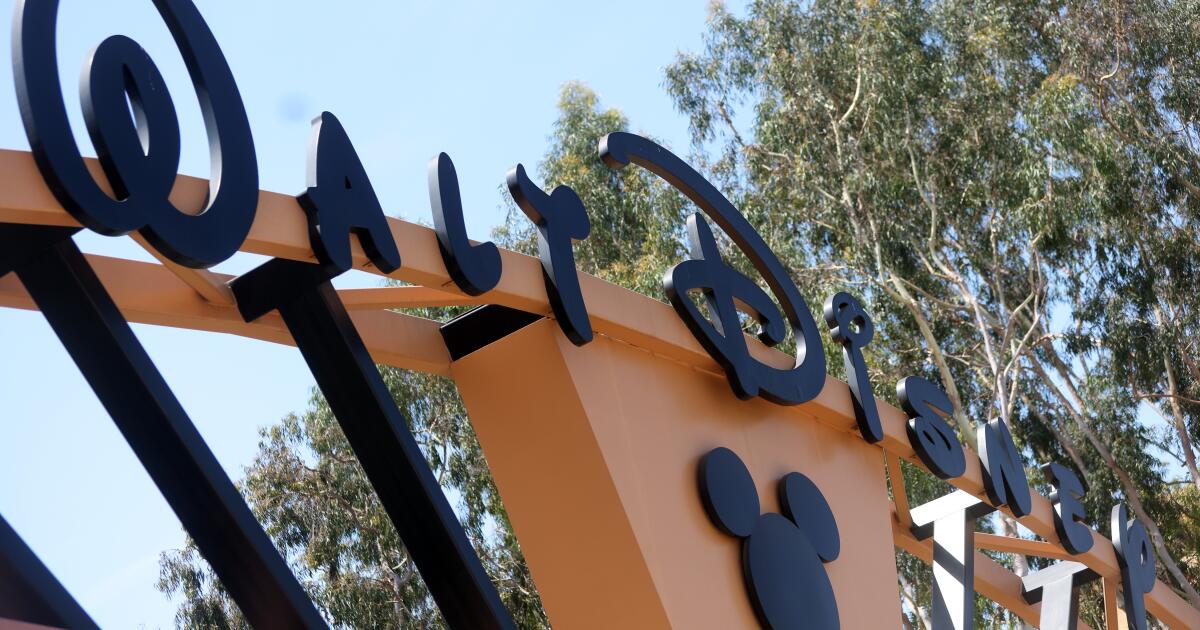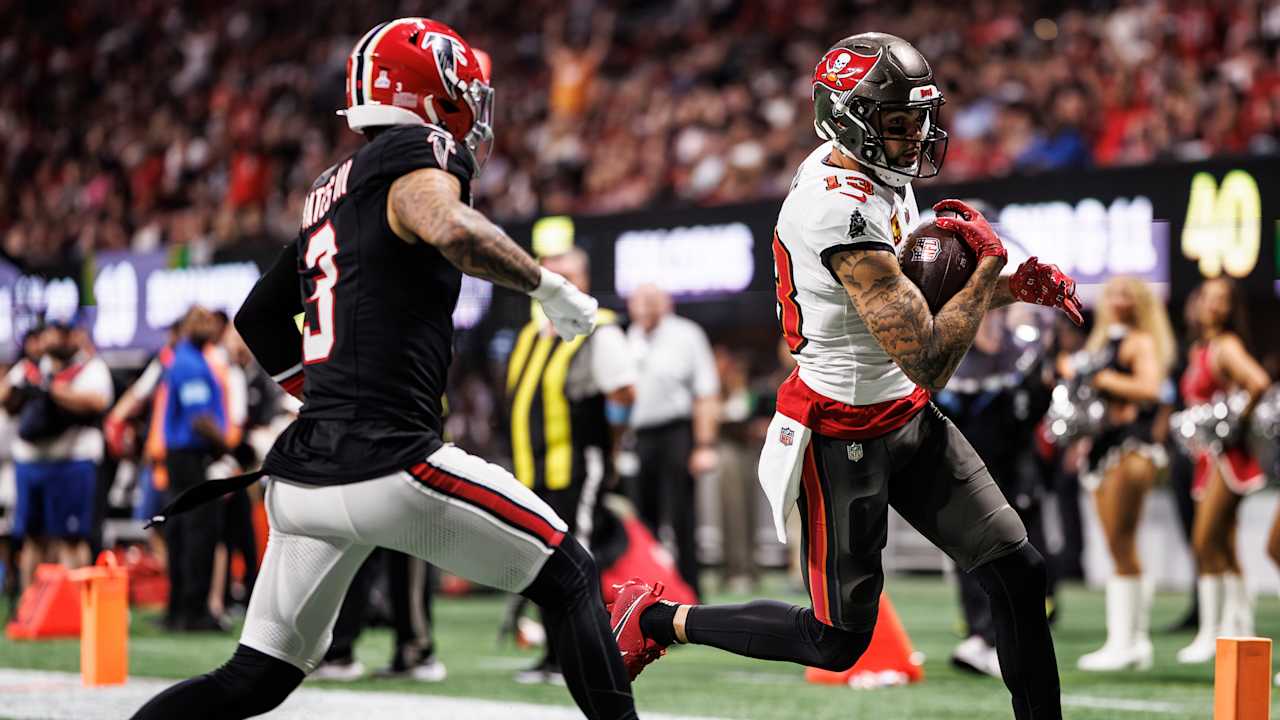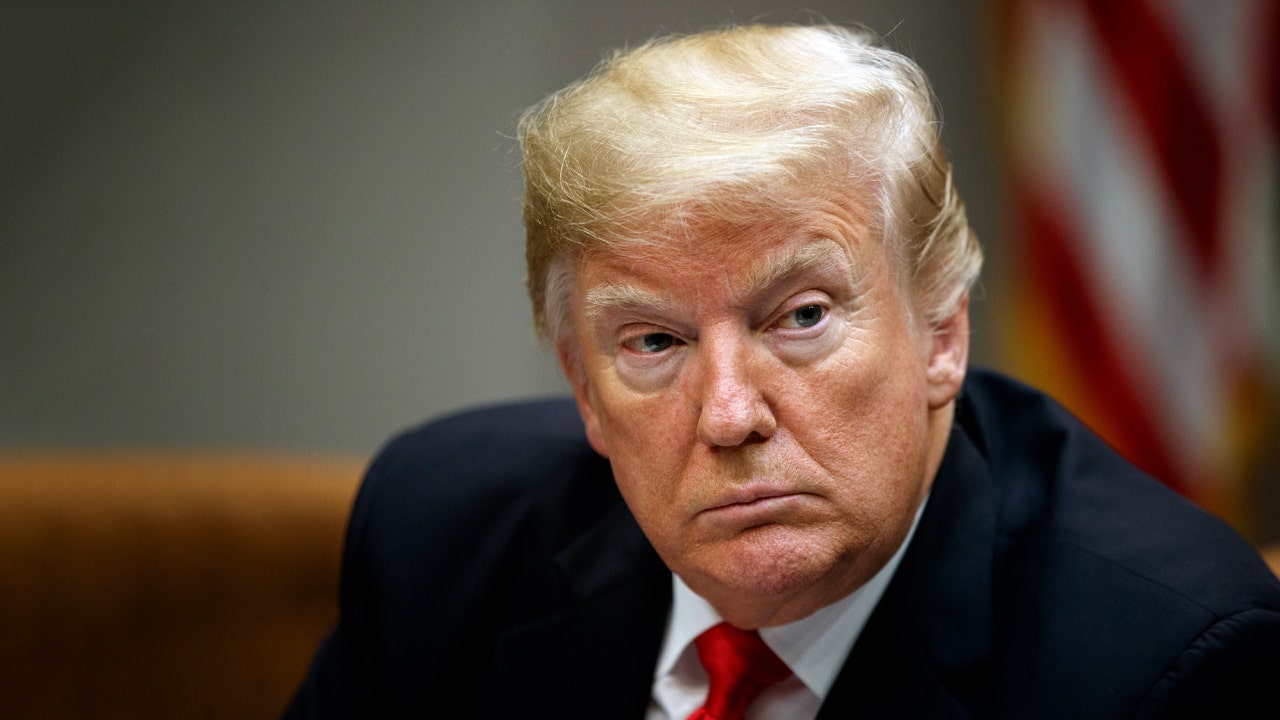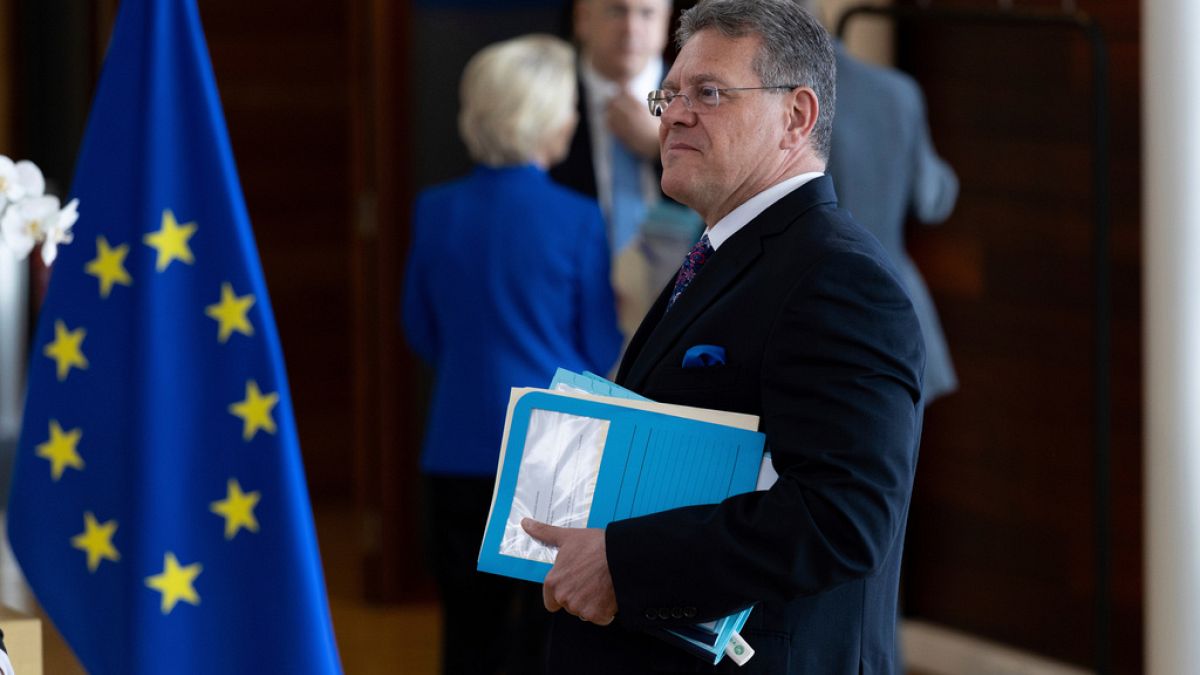Business
With bird flu cases on the rise, staff at California lab say they are overworked and burned out

On a recent Friday morning, Alyssa Laxamana arrived at a laboratory on the UC Davis campus to continue California’s race against bird flu.
A note from her supervisor had alerted Laxamana that about 130 samples of cow milk and other dairy products were en route — a large but manageable workload. She got to work preparing the buffer solutions and other supplies she would need to test the samples for H5N1 influenza, the virus that causes the flu spreading through California’s cattle and poultry farms.
Laxamana’s plans, however, quickly went out the window. More samples kept popping up in a digital queue as another lab worker logged unexpected shipments. Around noon she had to draw a line. She calculated she could get through about 270 samples that day. The rest would have to wait.
“I can only do so much,” Laxamana recalled saying to herself.
Laxamana works in the biotechnology department of the California Animal Health and Food Safety Laboratory, the first line of defense in the state’s effort to track and prevent the spread of the H5N1 virus.
Far from working at full capacity, however, the Davis lab has been roiled over the past year by workplace tensions. Understaffing and poor management, Laxamana and other current and former employees say, have left lab employees overworked and struggling to keep pace with testing demands, while creating an environment where mistakes are more likely. An exodus of most of the staff this year left Laxamana and a co-worker for a period as the only two people testing for the virus on a daily basis.
The stakes for the lab are high: It is the only lab in the state with the authority to confirm bird flu cases. Although there is no evidence that the alleged workplace problems have contributed to an outbreak, processing tests quickly gives farmers a jump on quarantining or culling infected animals.
“Any potential delay in testing could result in greater spread,” said Richard Webby, a virologist at St. Jude Children’s Research Hospital in Tennessee, who specializes in influenza in birds and other animals.
The problems come amid a rising tide of bird flu cases at poultry and dairy farms and an increasing threat to humans. Last week the Davis lab confirmed the virus had been found in a retail sample of raw milk from a Fresno-based dairy, which health officials warn may have been sold in stores in Los Angeles County. And, so far, about 30 people in the state — the vast majority of them dairy workers — are known to have been infected.
Bill Kisliuk, a spokesperson for UC Davis, denied that workplace issues have left the lab ill-equipped to handle bird flu testing. He said the facility has “maintained the supervision, staffing and resources necessary to provide timely and vital health and safety information to those asking us to perform tests throughout the current outbreak of avian flu.”
After The Times inquired about staffing levels and other workplace issues, the Governor’s Office of Emergency Services inspected the lab in October, while UC Davis officials hired more staff and got help from a lab in Wisconsin, according to current staff. UC Davis officials declined to confirm the moves.
The spokesperson for the California Department of Food and Agriculture, which jointly operates the lab, deferred questions to UC Davis, saying, “CAHFS lab has done tremendous work under demanding circumstances.”
The virus is taking a rising toll on the state’s dairy and poultry industries. Since September, outbreaks at turkey farms, chicken broilers, egg-laying facilities and other producers around the state have affected more than 6 million birds, according to USDA data. And while the virus is less lethal in cows than birds, dead cows and calves have piled up along roadsides in Tulare County, with farmers and veterinarians reporting mortality rates far higher than expected. Also worrisome for a state that produces 20% of the country’s milk is the steep drop-off in milk production farmers have reported among cows that recover from the flu.
Discontent over staffing, pay and other alleged workplace issues has pervaded the lab over the past two years, emails and other communications reviewed by The Times show.
In May 2023, employees in the biotechnology section sent a petition to the lab’s managers demanding they address the staff’s concerns. After getting no reply, they sent another note viewed by The Times in November, accusing managers of refusing “time and again” to make improvements. Their workload, they added, had “measurably increased” since the temporary closure of the another CAHFS lab in Tulare earlier that year due to flooding.
California Animal Health and Food Safety Laboratory worker Alyssa Laxamana, left, and former worker Kayla Dollar at the UC Davis lab in September.
(Brian van der Brug / Los Angeles Times)
“We operate with the mindset that the next outbreak is always around the corner, and we need proper training opportunities and competitive salary to remain adequately staffed for that eventuality,” they wrote.
Several lab staff quit their jobs in the first half of 2024, leaving behind what they described as a relatively inexperienced, skeletal crew.
Helen Kado-Fong, a supervisor who had worked in the biotechnology department for about 12 years decided to retire early in May. She said she had become fed up with what she described as an attitude of indifference or hostility toward efforts by her and others in the lab to raise concerns.
In an email she sent a few months before she left to the dean of UC Davis veterinary school and CAHFS director, Kado-Fong warned the “high turnover and disengagement of technical staff is weakening the ability of the CAHFS laboratory to fulfill its mission.”
Another to quit was Kayla Dollar, a lab assistant in the department for about two years, who said she left in June after being rejected for a promotion to a lab technician. Dollar said she was told she didn’t get the job because she didn’t have sufficient experience. Dollar said she was perplexed by the explanation because her supervisor Kado-Fong had been trying to get the OK to have Dollar receive training to prepare her for the technician role.
“I was hitting a wall at every turn,” Dollar said.
Dollar was hired at a UC Davis veterinary genetics lab in June as a biotechnologist, the same position she had been rejected from at CAHFS.
And Jasmine Burke quit her post as one of the lab’s technicians in July, she said, after being threatened with discipline for raising concerns about long work hours and rushed testing procedures. She and others said that as the lab rushed to meet 24-hour turnaround times for bird flu testing, other types of tests became backlogged, and she and other staff failed at times to keep up with routine lab maintenance, such as recalibrating machines and ensuring refrigerators holding samples and chemical solutions were set at the correct temperature.
“Every attempt to communicate concerns here goes nowhere,” she wrote to the university’s human resources department, according to an email viewed by The Times. Burke now works as a barista at a coffee shop.
Kisliuk, the UC Davis spokesperson, declined to respond to questions about specific incidents involving employees. “When a staff member reports concerns about workplace safety or conditions, we review the matter and take the appropriate steps,” he wrote in an emailed statement.
By July, five employees had departed, leaving behind only Laxamana and colleague Victoria Ontiveros, who have worked in the lab for two years or less.
Late one afternoon on a day in September, Ontiveros recalled how she changed into scrubs and donned two sets of surgical gloves, goggles, an N95 mask, a lab coat and a hairnet — the required gear for entering the Biosafety Level 3 lab, or BSL-3, where samples suspected of containing the virus are tested. Only approved staff can enter the facility through a locked door that requires an iris scan to open.

California officials have blocked Raw Milk dairy in Fresno from distributing its raw dairy products.
(Tomas Ovalle / For The Times)
Ontiveros had already done several long shifts in the BSL-3 that week, which with normal staffing would have been divided among multiple people, she said. Now, she was preparing to test cow milk samples that had arrived at the lab around 2 p.m. Typically, samples received after noon were tested the following day, but she said her supervisors had insisted these needed to be turned around quickly as infections spread.
She said she worked for hours, painstakingly pipetting drops of the samples into tiny glass wells as part of the testing process, which extracts genetic material in order to detect the presence of the virus. Then, late in the evening, she realized she had programmed one of the machines analyzing the samples incorrectly. Ontiveros felt a sharp pang of despair. All her work, and the hours Laxamana had spent earlier in the day mixing a chemical solution to wash the samples, had been wasted.
It was around 9 p.m. when she emerged from the lab. She had started her workday around 8 a.m. The tests would have to be redone the next day.
“We are stretched so thin that mistakes can happen,” Ontiveros said. “I was so tired and mentally drained.”
At the time, Ontiveros said she was handling the testing of cow milk largely on her own, although another worker was sometimes sent up from the Tulare lab to help on weekends. While Laxamana had the required security clearance, she hadn’t yet completed the necessary training.
“There’s this huge pressure on me and and responsibility to show up to work every day because I have no backup,” Ontiveros said.
Later in September, Laxamana described being put straight to work as the number of cattle milk samples was ramping up. She said she was asked to run 44 samples without ever having completed a practice run. The only hands-on training she had had was twice shadowing the testing process. As Laxamana worked, Ontiveros stood nearby, supervising.
Already nervous, Laxamana said she was distracted by a walkie-talkie that crackled with voices as she tried to work. Colleagues in the main lab were peppering her with questions about what to do about another batch of tests that appeared to have failed. Holding a pipette carefully in one hand, Laxamana talked through the radio to troubleshoot the problem.
At times this year understaffing has led to quality control missteps, current and former workers said.
Laxamana described coming to work one morning in October and realizing results of tests she had run the day before had not been analyzed properly by lab staff. She said a manager assured Laxamana the errors would be corrected, but when she checked later that day the results had not been changed.
She said she stopped a case coordinator from releasing the incorrect results to farmers, which would have resulted in the culling of birds.
Earlier this year, a poultry sample got misplaced and went untested for three weeks, Laxamana said. She attributed the mistake to being overworked, saying, “There were only two people handling the workload, and things were missed in all of that chaos.”
Kisliuk, the UC Davis spokesperson, declined to answer questions about specific incidents described where workers made mistakes or where managers made mistakes. “We have multiple levels of quality assurance and extensive training of staff,” he said.
In late summer the lab hired a supervisor and others to join the lab. The move created additional work for Laxamana and Ontiveros, who said they were required to juggle their own work while also helping with training the new arrivals.
In recent weeks the supervisor and another new hire took over testing of high-risk poultry samples, but Laxamana and Ontiveros said staffing shortages remain.
Still, Laxamana doesn’t think about leaving.
“There are things that I can do to help prevent a disaster,” she said.“I could not bear to leave the lab in the condition that it is right now.”

Business
Disney to cut hundreds of employees in latest round of layoffs

Walt Disney Co. launched another deep round of layoffs on Monday, notifying several hundred Disney employees in the U.S. and abroad that their jobs were being eliminated amid an increasingly difficult economic environment for traditional television.
People close to the Burbank entertainment giant confirmed the cuts, which are hitting film and television marketing teams, television publicity, casting and development as well as corporate financial operations.
The move comes just three months after the company axed 200 workers, including at ABC News in New York and Disney-owned entertainment networks. At the time, the division said it was trimming its staff by 6% amid shrinking TV ratings and revenue.
Disney declined to specify how many workers were losing their jobs. The cutbacks — the fourth round of layoffs in less than a year — come after Disney Chief Executive Bob Iger acknowledged to Wall Street that Disney had been pumping out too many shows and movies to compete against Netflix.
The programming buildup accelerated as the company prepared to launch Disney+ in late 2019, and it bulked up its staff to handle the more robust pipeline.
But the company has since retrenched, recognizing the need to focus on creating high-quality originals that meet Disney’s once lofty standards.
Disney has faced significant budget pressures after promising investors that its direct-to-consumer services — Disney+, Hulu and ESPN+ — would achieve profitability last year. The company lost billions of dollars over several years in its strategic shift to streaming, but it reached its goal to make money on streaming last fall.
Still, streaming subscribers can be fickle, creating a daunting new reality for the company that could long count on cable TV subscriptions as one of its most reliable economic pillars. Cord-cutting has taken a heavy toll.
The entertainment giant — one of Southern California’s largest private sector employers — has eliminated more than 7,000 jobs since 2023.
The traditional TV and film units felt the brunt of the downsizing during the last year. In July, the company slashed about 140 workers, primarily in its Disney entertainment unit. The company’s TV stations also lost staff members and ABC News shed about 40 employees last October.
ABC News largely escaped this week’s cuts, according to one knowledgeable person who was not authorized to discuss the internal moves.
ABC News still boasts healthy audiences for its newscasts, but the ABC television network and Disney-owned entertainment channels have seen dramatic viewer defections as consumers switch to streaming services, including Netflix, Paramount+ and Disney+.
ABC’s prime-time schedule has lost considerable steam. For the just-ended broadcast television season, ABC mustered only three shows in Nielsen’s top 20 rankings. “Monday Night Football on ABC” ranked seventh by averaging more than 10 million viewers, “Saturday Night Football” ranked 18th with 7.4 million viewers and freshman drama “High Potential” made the cut at 20th with an average audience of 7.1 million, according to Nielsen.
Monday’s eliminations come three weeks after Disney presented its fall lineup to advertisers, leaning heavily on its sports stars including Peyton and Eli Manning rather than actors from its entertainment programming.
ESPN was spared the ax as the sports unit is preparing for its high-stakes launch this fall of a stand-alone ESPN streaming service, the knowledgeable person said.
The move comes amid a strong run for Disney’s film studio, which has celebrated blockbuster box office results from its live-action “Lilo & Stitch,” which has earned $610 million in ticket sales globally, according to Box Office Mojo.
A month ago, Disney issued strong fiscal second-quarter earnings. The company reported $23.6 billion in revenue for the three months that ended March 29, a 7% increase compared with the same quarter a year earlier. Earnings before taxes totaled $3.1 billion, up $2.4 billion from last year.
Hollywood trade site Deadline first reported the news of the latest Disney cuts.
The landscape has been increasingly challenging for traditional companies. In addition to Disney, Warner Bros. Discovery, Paramount Global and even such tech companies as Amazon and Apple have fired workers.
In late May, NBCUniversal cut 54 jobs in Los Angeles, according to state employment records. Six Flags Entertainment Corp. laid off 140 workers.
Disney shares closed down 9 cents to $112.95.
Business
The Imports the U.S. Relies On Most From 140 Nations, From Albania to Zimbabwe

President Trump’s on-and-off tariffs have created deep uncertainty about the cost of imported goods — and it’s not always clear what goods will be most affected with any given country.
The largest U.S. imports from many countries are oil and gas, electronics, cars and pharmaceuticals. But there’s another way to look at what Americans import: trying to measure a country’s distinct contribution to the U.S.’s total needs.
For example, China’s largest exports to the U.S. — by dollar value — are electronics. But the U.S. also imports large quantities of electronics from elsewhere. Nearly 100 percent of imported baby carriages, however, come from China.
Switzerland, meanwhile, is responsible for nearly all of America’s imported precious metal watches. Ethiopia, on the other hand, sends the U.S. around 2 percent of its imported knit babies’ clothes — but that’s a larger share than for any other item it exports to the U.S.
The table below shows the item the U.S. relies on most from each of 140 trading partners. (We took out items that the U.S. also exports in large quantities, such as petroleum.)
What the U.S. is most reliant on from each country
| COUNTRY | ITEM | Pct. of U.S. imports from here |
|
|---|---|---|---|
| Canada | Live pigs | >99% | |
| Peru | Calcium phosphates | >99% | |
| South Africa | Chromium ore | 98% | |
| Switzerland | Precious metal watches | 98% | |
| China | Baby carriages | 97% | |
| Mexico | Self-propelled rail transport | 94% | |
| Portugal | Natural cork articles | 93% | |
| India | Synthetic reconstructed jewelry stones | 89% | |
| Italy | Vermouth | 86% | |
| Indonesia | Palm oil | 85% | |
| Madagascar | Vanilla | 80% | |
| Turkey | Retail artificial filament yarn | 79% | |
| Brazil | Semi-finished iron | 76% | |
| Vietnam | Coconuts, brazil nuts, and cashews | 75% | |
| Australia | Sheep and goat meat | 74% | |
| New Zealand | Misc. animal fats | 73% | |
| Gabon | Manganese ore | 71% | |
| Chile | Refined copper | 71% | |
| Netherlands | Bulbs and roots | 70% | |
| Spain | Olive oil | 62% | |
| Taiwan | Tapioca | 62% | |
| Argentina | Groundnut oil | 60% | |
| Colombia | Cut flowers | 60% | |
| Bolivia | Tungsten ore | 59% | |
| Dominican Republic | Rolled tobacco | 59% | |
| Cote d’Ivoire | Cocoa paste | 59% | |
| Germany | Felt machinery | 58% | |
| Finland | Cobalt oxides and hydroxides | 56% | |
| Japan | Pianos | 52% | |
| Israel | Phosphatic fertilizers | 50% | |
| Philippines | Coconut oil | 50% | |
| France | Insect resins | 50% | |
| Thailand | Sugar preserved foods | 47% | |
| Malaysia | Rubber apparel | 46% | |
| Ireland | Sulfonamides | 45% | |
| Pakistan | Light mixed woven cotton | 43% | |
| Singapore | Glass with edge workings | 39% | |
| Guatemala | Bananas | 38% | |
| Ecuador | Cocoa beans | 38% | |
| South Korea | Rubber inner tubes | 33% | |
| Jamaica | Aluminum ore | 33% | |
| Bangladesh | Non-knit babies’ garments | 31% | |
| Austria | Handguns | 29% | |
| United Kingdom | Antiques | 28% | |
| Cambodia | Gum coated textile fabric | 25% | |
| Nicaragua | Rolled tobacco | 24% | |
| Guyana | Aluminum ore | 24% | |
| Ukraine | Seed oils | 24% | |
| Belgium | Flax woven fabric | 22% | |
| Bahrain | Stranded aluminum wire | 22% | |
| Sri Lanka | Coconut and other vegetable fibers | 21% | |
| Morocco | Barium sulphate | 20% | |
| Romania | Steel ingots | 19% | |
| Norway | Carbides | 19% | |
| Sweden | Stainless steel ingots | 17% | |
| Costa Rica | Bananas | 16% | |
| Honduras | Molasses | 16% | |
| Paraguay | Wood charcoal | 16% | |
| Denmark | Casein | 15% | |
| Tunisia | Pure olive oil | 15% | |
| Russia | Phosphatic fertilizers | 15% | |
| Fiji | Water | 15% | |
| Hong Kong | Pearls | 13% | |
| Nepal | Knotted carpets | 13% | |
| Poland | Processed mushrooms | 12% | |
| Lebanon | Phosphatic fertilizers | 12% | |
| Croatia | Handguns | 12% | |
| Bulgaria | Non-retail combed wool yarn | 12% | |
| Laos | Barium sulphate | 12% | |
| Mozambique | Titanium ore | 11% | |
| Ghana | Cocoa beans | 11% | |
| Bahamas | Gravel and crushed stone | 10% | |
| Greece | Dried, salted, smoked or brined fish | 10% | |
| Jordan | Knit men’s coats | 10% | |
| Czech Republic | Rolling machines | 10% | |
| El Salvador | Molasses | 10% | |
| Egypt | Spice seeds | 10% | |
| United Arab Emirates | Raw aluminum | 9% | |
| Uganda | Vanilla | 9% | |
| Nigeria | Raw lead | 9% | |
| Uruguay | Bovine, sheep, and goat fat | 9% | |
| Latvia | Book-binding machines | 9% | |
| Kazakhstan | Ironmaking alloys | 8% | |
| Cameroon | Cocoa paste | 8% | |
| Lithuania | Wheat gluten | 8% | |
| Oman | Metal office supplies | 8% | |
| Hungary | Seed oils | 7% | |
| Belize | Molasses | 7% | |
| Faroe Islands | Non-fillet fresh fish | 6% | |
| Qatar | Pearls | 6% | |
| Myanmar | Misc. knit clothing accessories | 5% | |
| Zambia | Precious stones | 5% | |
| Slovenia | Packaged medications | 5% | |
| Senegal | Titanium ore | 5% | |
| Algeria | Cement | 4% | |
| Haiti | Knit T-shirts | 4% | |
| Kenya | Titanium ore | 4% | |
| Liechtenstein | Iron nails | 4% | |
| Georgia | Ironmaking alloys | 4% | |
| Liberia | Rubber | 4% | |
| Serbia | Rubber inner tubes | 4% | |
| Iceland | Fish fillets | 4% | |
| Democratic Republic of the Congo | Refined copper | 3% | |
| Botswana | Diamonds | 3% | |
| Chad | Insect resins | 3% | |
| Zimbabwe | Leather further prepared after tanning or crusting | 3% | |
| Luxembourg | Polyamide fabric | 3% | |
| Panama | Non-fillet fresh fish | 3% | |
| Albania | Ironmaking alloys | 3% | |
| Estonia | Fishing and hunting equipment | 2% | |
| Ethiopia | Knit babies’ garments | 2% | |
| Namibia | Wood charcoal | 2% | |
| Venezuela | Processed crustaceans | 2% | |
| Slovakia | Rubber tires | 2% | |
| Lesotho | Knit men’s shirts | 2% | |
| Tanzania | Precious stones | 2% | |
| Papua New Guinea | Vanilla | 1% | |
| Mauritius | Processed fish | 1% | |
| Saudi Arabia | Iron nails | 1% | |
| Moldova | Wine | ||
| Suriname | Non-fillet fresh fish | ||
| Angola | Pig iron | ||
| Armenia | Diamonds | ||
| Trinidad and Tobago | Non-fillet fresh fish | ||
| Macau | Knitted hats | ||
| North Macedonia | Curbstones | ||
| Togo | Fake hair | ||
| Bosnia and Herzegovina | Non-knit women’s coats | ||
| Republic of the Congo | Antiques | ||
| Azerbaijan | Ironmaking alloys | ||
| Iraq | Antiques | ||
| Libya | Misc. vegetable products | ||
| Cyprus | Olive oil | ||
| Kuwait | Ironmaking alloys | ||
| Malta | Air conditioners | ||
| British Virgin Islands | Diamonds | ||
| Brunei | Knit T-shirts | ||
| Cayman Islands | Phones | ||
| Equatorial Guinea | Knitted hats | ||
| Sint Maarten | Hard liquor |
Curious where the U.S. imports a particular item from? You can look it up below.
Searchable table
| Computers $138.5 billion in imports | ||
| Mexico | 35% | |
| China | 26% | |
| Taiwan | 19% | |
| Vietnam | 11% | |
| Thailand | 5% | |
| Phones $119 billion | ||
| China | 42% | |
| Vietnam | 17% | |
| Mexico | 9% | |
| India | 7% | |
| Thailand | 7% | |
| Packaged medications $100.4 billion | ||
| Ireland | 16% | |
| Switzerland | 12% | |
| India | 12% | |
| Italy | 7% | |
| China | 6% | |
About the data
We analyzed U.S. International Trade Commission data on goods imported for consumption in 2024. We used product descriptions from the Observatory of Economic Complexity to label the goods, and edited these descriptions lightly.
We grouped goods using the first four digits of their code in the Harmonized Tariff Schedule, which lists categories of products.
We excluded goods that are widely produced in the U.S., using export data to remove goods where the U.S. exports at least 25 percent of what it imports by value.
We included only trading partners that export at least $50 million of goods each year to the U.S.
Business
From 'Squid Game' to 'Frankenstein,' Netflix takes brand promotion to a new level at Tudum

Vanessa Agabo-Davalos has spent hours watching the dystopian drama “Squid Game” on Netflix. But nothing could prepare the 21-year-old college student for seeing one of the show’s actors walk the red carpet a few feet in front of her.
She found herself starstruck in the presence of Kang Ae-sim, who portrays Geum-ja (Player 149) on the South Korean thriller. All the more so when they snapped a photo together.
“You forget everything. You forget how to talk — it’s just like ‘Wow, I saw you on TV,’” said Agabo-Davalos, who traveled an hour from the Inland Empire and can’t wait to see the final season this month. “I feel like it’s a dream come true for the ones that really enjoyed these shows.”
She was among the more than 9,500 Netflix fans who gathered Saturday at the Kia Forum in Inglewood for Netflix‘s Tudum live event, an hours-long extravaganza meant to hype up audiences for upcoming series, movies and returning franchises.
People traveled from all over the world to celebrate their love for shows including “Squid Game,” Addams Family series “Wednesday” and sci-fi show “Stranger Things.”
During Netflix’s variety-show like program onstage at the famed venue, the company showed off how its computer animated version of Tony Tony Chopper, a toddler-sized reindeer-boy character in the live action pirate series “One Piece,” would appear in the upcoming season.
Oscar-winning director Guillermo del Toro unveiled a new teaser trailer for his November Netflix movie, “Frankenstein,” starring Oscar Isaac and Mia Goth, who both appeared onstage with the filmmaker. Fans also saw the first six minutes of the first episode of Season 2 of “Wednesday,” which will be released in August.
The event, named after the sound that plays before a Netflix program begins (“tuh-dum”), was part of Netflix’s ongoing effort to harness the enthusiasm its viewers have for its most popular programs and inspire them to keep streaming.
“It is about celebrating fans and giving something back to them,” Netflix’s Chief Marketing Officer Marian Lee told The Times after the event. “Of course it is also about promoting … we have a huge slate coming up.”
Netflix hosted the first Tudum event in 2020 in São Paulo, which came from the company’s Brazil team, which had an idea for an event that rewarded the streamer’s fans of young adult shows. That later led to Tudum evolving into different formats including festivals and livestreams, events that were more like a fan convention.
In 2023, Netflix held Tudum again in São Paulo, drawing more than 35,000 attendees and more than 78 million views through Netflix’s social channels.
But Saturday’s festivities in Inglewood took Netflix brand promotion to a new level.
It was the first time Tudum was livestreamed directly on Netflix, rather than on YouTube or social media outlets. The event played like a roughly two-hour live variety show, featuring “ask me anything” segments, as well as performances from music artists including Lady Gaga, who appears in the next season of “Wednesday.”
Xavier Woods, left, and Kofi Kingston attend Netflix Tudum 2025: The Live Event at the Kia Forum on Saturday in Inglewood.
(Emma McIntyre/Getty Images for Netflix)
There was plenty of cross promotion of Netflix content during the show, as WWE wrestlers talked about why people should tune into their weekly live show on the platform, while also speaking about their love for “One Piece,” based on manga.
Tudum host Sofia Carson touted her upcoming Netflix movie, “My Oxford Year,” which also stars Corey Mylchreest, known for portraying King George III in Georgian era romance series “Queen Charlotte” from the “Bridgerton” universe. Sesame Street‘s Cookie Monster also made an appearance with actors Ben Affleck and Matt Damon, who star in the new Netflix movie “The RIP.”
“I don’t think another studio can pull this off in the way that we did,” Lee said. “Fandoms can be unique and distinct. They’re putting all those fans in a room together, WWE fans next to [mystery movie] ‘Knives Out’ fans next to Lady Gaga fans for ‘Wednesday.’ That’s an incredible achievement. That is something only Netflix can do.”
To some people, Tudum is a page borrowed from Walt Disney Co., which hosts the biennial D23 fan convention in Anaheim, pulling together disparate fandoms (Disney princesses, Marvel, Pixar, Star Wars) to converge in the same place. It raises the question: Does Netflix, a streaming service that produces shows from just about every genre for just about every kind of audience, have fans in the same way that Disney does?
Over the years, Netflix has expanded its live events and in-person experiences to keep viewers engaged. Those have included “Bridgerton” balls, Netflix-themed eateries and retail stores selling merch based on “Stranger Things” and other shows.
Lee declined to say how much Netflix spent on the event. Some fans bought tickets, ranging from $25 to $75, while others said they scored free tickets. Netflix said tickets sold out in about a week.
Netflix doesn’t have iconic animated characters like Mickey Mouse or storied franchises like “Star Wars” or Marvel. But Netflix’s strategy is to have something for everyone, and because of that, people are reluctant to quit it, industry observers say, even as economic anxieties run rampant.
“That is the competitive advantage of Netflix,” said Larry Vincent, a marketing professor at USC Marshall School of Business. “It really has become the big tent of streaming. They’ve invested pretty significantly to develop a stockpile of content.”
The streamer said last year it had more than 301 million subscribers globally. On Saturday, the attendees reflected that expansive audience.

Netflix Tudum 2025: The Live Event at the Kia Forum on Saturday in Inglewood.
(Adam Rose/Netflix)
Fans dressed up as their favorite characters from Netflix shows. People wore black dresses similar to Wednesday’s attire, straw hats in support of “One Piece” and green tracksuits like the ones players wear in the deadly “Squid Game.”
When Cookie Monster appeared behind a DJ booth on the “N” shaped red carpet to sing “‘C’ is for Cookie,” adults in “Squid Game” tracksuits joined in the chorus.
“It’s all-encompassing and global and passionate,” Tudum host Carson, known for starring in Netflix movies including “Carry-On” and “Purple Hearts,” said in an interview after the event ended. “It is truly extraordinary to feel the love from every single part of the world — it crosses languages, it crosses cultures.”
Shaheidi Jimenez, 21, came to the Netflix event as a fan of “Wednesday” and “Squid Game.” She hadn’t watched “Stranger Things,” but seeing the screaming fans for the show’s actors on the red carpet made her more curious about the sci-fi series.
“When I see the cast, it makes me want to watch it now,” Jimenez said. “I’m familiar with them more. It makes me want to watch the show and probably get into it.”
-

 Business1 week ago
Business1 week agoPlastic Spoons, Umbrellas, Violins: A Guide to What Americans Buy From China
-

 Movie Reviews1 week ago
Movie Reviews1 week agoMOVIE REVIEW – Mission: Impossible 8 has Tom Cruise facing his final reckoning
-

 Movie Reviews1 week ago
Movie Reviews1 week ago‘Magellan’ Review: Gael Garcia Bernal Plays the Famous Explorer in Lav Diaz’s Exquisitely Shot Challenge of an Arthouse Epic
-

 Maryland1 week ago
Maryland1 week agoMaryland, Cornell to face off in NCAA men’s lacrosse championship game
-

 Technology1 week ago
Technology1 week agoThe oldest Fire TV devices are losing Netflix support soon
-

 West1 week ago
West1 week agoRiley Gaines says 'literal human feces' thrown in protest of Turning Point USA at University of Washington
-

 Tennessee1 week ago
Tennessee1 week agoTennessee ace Karlyn Pickens breaks her own record for fastest softball pitch ever thrown
-

 World1 week ago
World1 week agoAustralia begins cleanup after floods kill 5, strand thousands














